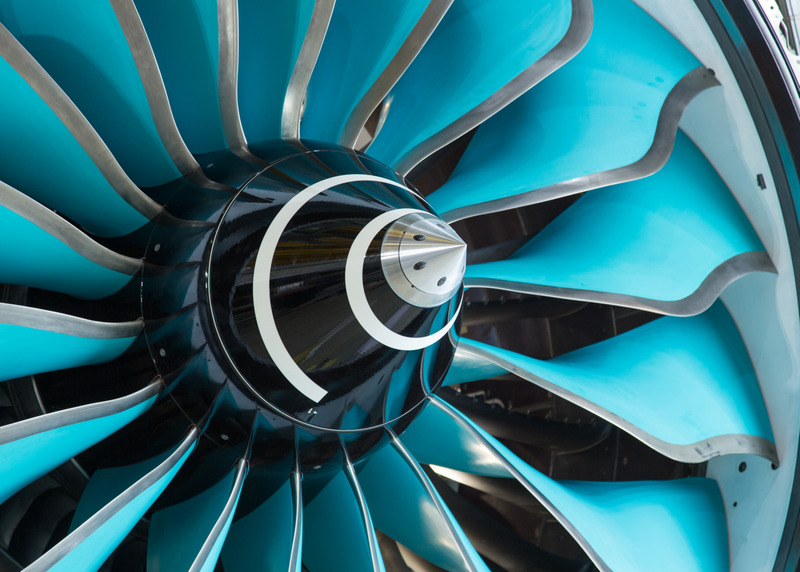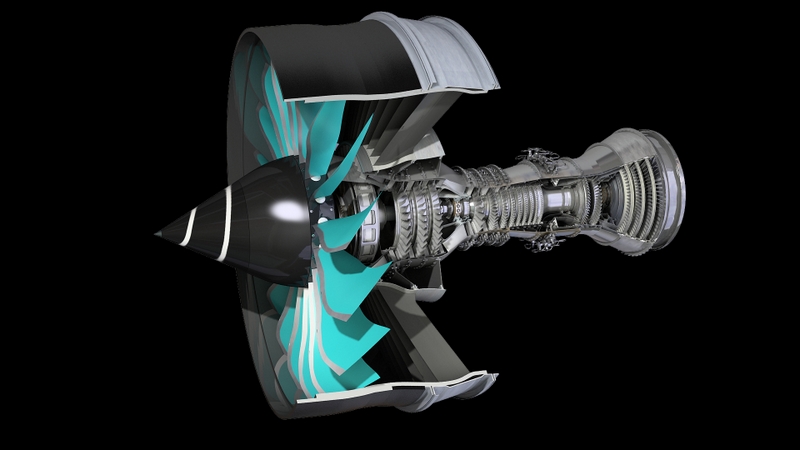Harder, faster, better, stronger

Neil Calder examines the latest progress on the key technology advances that could help determine the overall commercial success of future aero-engine programmes.
The main civil aero-engine companies are chasing the development of ostensibly similar materials and manufacturing technologies for cores and fans, but it is the relative timing of these technology advances which could be the deciding factor in determining the overall commercial success of future engine programmes.
Must-have’s on modern high-efficiency engine products are multiple shafts and gearing for the fan to allow all stages to be operating simultaneously at their optimum speed conditions; advanced high temperature materials; and lightweight carbon composite fan blades.
In the quest for lower specific fuel consumption and environmental emissions through both thermodynamic and aerodynamic efficiency, the engine core efficiency is dictated largely by the pressure ratio across it, and propulsion efficiency by the overall bypass ratio. The first of these is primarily a function of the temperature at which combustion gases can enter the high pressure turbine. The latter is a characteristic of the effectiveness of the fan system in shifting air around the engine core.
With its proposed Advance and UltraFan engines and the developments which would have to happen to make these possible, Rolls-Royce has the opportunity to essentially leapfrog its competitors in large engines. Both Advance and UltraFan are three shaft designs, in the manner of RB211 and Trent, and would be sharing a common new core. Advance is configured to have a pressure ratio in excess of 60:1 (well in excess of any similar current system which are around 40:1) and a bypass ratio over 11. UltraFan with the addition of gearing between the LP spool and fan is expected to take this pressure ratio to in excess of 70:1 and with a bypass ratio of at least 15.
Enabling technologies
In terms of engine technology this places these products within a new and unexplored performance area. However, they need a critical set of affordable technology capabilities in materials and manufacturing processes in order to stay competitive. The ‘Strategic Affordable Manufacturing in the UK through Leading Environmental Technologies’ SAMULET 1 and 2 programmes (2009–13 and 2012–16 respectively) have provided a springboard of enabling technologies in metallic and composite technologies with a total of around £65 million of UK government grant support.

The superplastic forming and diffusion bonding production process for titanium alloys, which has provided the hollow titanium wide chord fan blades for the Trent series of engines has served Rolls-Royce very well over the lifetime of this engine programme. There is a performance ceiling for this technology, however, which will have to be broken through in order to reach the high performance figures demanded of future engine products. Because Rolls-Royce was a relative latecomer to carbon fibre composites, it doesn’t have any organisational baggage or sunk investment in particular processes or techniques and can therefore establish a relatively futureproof position by adopting the most recent advances in manufacturing capability.
The Composite Technology and Applications Ltd (CTAL) capability, originally formed as a joint venture with experienced composite engineers GKN in order to access the latest in high-performance and low-cost composites and acquired outright by Rolls-Royce in 2013, aimed to generate efficient manufacturing technology for high volume production of a wide range of fan blade sizes. The composite blades incorporating a titanium leading edge were flown successfully in a Trent 1000 engine in 2014, but now the challenge is to make the production process affordable. Much of the technology development surrounding this has been in the area of automated production of composite parts and in mechanisation of processes to ensure the high quality standard required for volume production of these highly-engineered products.
This approach contrasts sharply with the much more manual production processes established around 20 years ago by General Electric on its GE90 family of engines using extensive hand layup and now carried through to GEnx. The anticipated production rates extending into the middle of the market have meant that the previous manual production techniques are running out of steam in terms of high production rates and inherent process variability. This phenomenon is a recurring characteristic of the maturation of composite manufacturing.
The CTAL blade manufacturing facility has the technical capability to extend to smaller fan sets which could additionally provide a competitive offering for narrow body engines.
Geared for success
The acquisition of fan gearing technology and establishment of gearbox manufacturing capability is also being achieved through Aerospace Transmission Technologies, a joint venture with Liebherr. This collaboration seeks to push the frontiers of gearing beyond the current state-of-the-art which is characterised by the Pratt & Whitney pure power geared turbofan family. Geared turbofan technology has been demonstrated effectively by them around the 33,000lb thrust level, but UltraFan will more than double this power level.

Within the scope of the Aerospace Technology Institute UK national strategy for propulsion systems published in July 2015, a portfolio of recently launched research and development projects looks like it will pave the way for the technological advances required to realise both Advance and UltraFan engines. Within the last six months research and development grants totalling some £48m have been awarded for a portfolio of projects many of which deal with manufacturing and materials. The range of technologies covered by these includes enabling technologies for the production of high power gearbox systems for large engines; manufacturing of hybrid carbon and titanium fan blades; higher temperature nickel alloys; and enhanced turbine manufacturing for performance and cost.
This draws in effective participation from the Rolls-Royce University technology centres and the high-value manufacturing catapult centres. This is essentially a research network, however, it does involve extensive subcontracting of development within the Rolls-Royce supply chain.
Although the SAMULET 1 and 2 programmes provided for a general advancement in advance manufacturing capability, this new portfolio of activities appears much more sharply focused on future product offerings. It is possible to extrapolate this technology development to much enhanced capabilities in revolutionising both pressure and bypass ratios.













